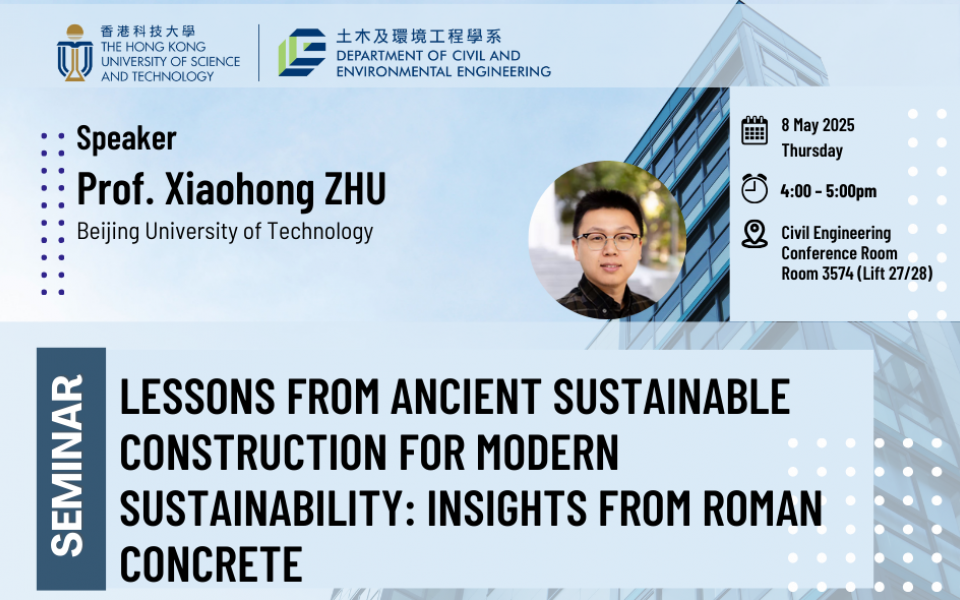Civil Engineering Departmental Seminar - Lessons from Ancient Sustainable Construction for Modern Sustainability: Insights from Roman Concrete
Supporting the below United Nations Sustainable Development Goals:支持以下聯合國可持續發展目標:支持以下联合国可持续发展目标:
Standing tall for nearly two millennia, Roman concrete remains a remarkable example of ancient engineering, renowned for its exceptional durability and functionality. A comprehensive analysis of the Latrine Canopus concrete from Villa Adriana (Tivoli, Italy, 2nd century A.D.) using multi-scale spectroscopic and tomographic approaches has uncovered the mechanisms behind the resilience of these enduring structures. Microstructural evidence reveals that volcanic lava composed of leucite, analcime, and diopside-ferrian was combined with lime clasts at a water-to-binder ratio of approximately 0.43 to construct this iconic building. Cementation calcite served as the primary binding phase, while the formation of a small amount of C-A-S-H around the lava further enhanced the integrity of concrete. The epitaxial growth of calcite filled cracks and voids through carbonate mineralization, where calcium ions reacted with atmospheric CO2 to form calcite, reinforcing structural strength and reducing porosity. This self-healing process mitigated environmental and mechanical stresses, providing a valuable model for the development of modern sustainable and resilient construction materials.
Prof. Xiaohong Zhu is a Professor of Civil Engineering Materials at Beijing University of Technology. Over the years, he has conducted research at Chongqing University, Queen’s University Belfast, the University of Leeds, The Hong Kong Polytechnic University, and University of California, Berkeley, specializing in low-carbon cement and concrete technology, as well as aged concrete. Dr. Zhu has collaborated with Prof. Ian G. Richardson at the University of Leeds on several historically significant aged cement samples, including Joseph Aspdin’s patent Portland cement (Wakefield, UK) and William Aspdin’s cement (Sheerness, UK). Additionally, he has worked with Prof. Paulo J. M. Monteiro at UC Berkeley on Roman concrete and concrete from the Hagia Sophia Grand Mosque (Istanbul, Turkey).
